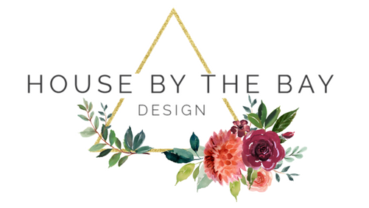Our kitchen is ALMOST completely done, I’m just waiting for the last of the painted cabinet doors to cure so I can put them back up (hopefully this weekend). While I was posting about our One Room Challenge kitchen I got a lot of compliments about the distressed wood shelves I built. I thought I’d share how I made them with a DIY tutorial.
Materials
– Rough Pine boards – 12″ wide
– Random Orbit Sander
– Sanding disks for 60, 80 & 120 grit
– Stain of your choosing
– Finish of your choosing
If the wood you buy has huge knots/splits in it like ours you will also need:
– 2 part epoxy
– Quality Tape
– Small foam brush
– Acrylic paint to tint (optional)
Once you’ve gathered all your supplies the first step is to give your wood a good sanding with your 40 grit and then 80 grit sandpaper. Rough pine has a lot of character already but it’s also…rough…and dirty so this just gives you a better idea of what you’re working with.
After sanding you can decide which part of the boards you like the best and cut to size. We cut ours to 10.5″ so they would be set back a bit from our 12″ deep cabinets, but this is completely personal preference.
Duh moment: I made these shelves before we tiled the back splash so my shelves were all slightly too long and had to be trimmed after the fact. Oops. Learn from my mistakes.
Two of the boards we bought had major knots, which we loved but made them very unstable as shelves, these needed to be filled with epoxy to make them more structurally sound.
To do this, cover the entire knot on what will be the bottom of your shelf. If the knot is at the edge go up the side as well with a little sticking out the top.
Mix up your epoxy and if you want to, tint it with a little paint. You can buy proper epoxy tint but for the small amount that I used it’s not really worth when regular acrylic paint will work just fine.
Using your small foam brush squish (technical term) the epoxy into the knot from the top of your shelf. The tape you applied will make sure that the epoxy pools in the knot – if you notice any leaking through patch with tape immediately. Keep mixing small batches of epoxy and filling the knot until it stops sinking in.
I had one really epic knot and kinda liked the look of it so I stopped filling when it was about 3/4 full and it’s still solid as a rock.
After the epoxy has hardened peel off all the tape and take a hand plane to the excess.
With your boards cut to size and all the knots filled, it’s time to distress! I tried using a few different tools to give a distressed look, in the end my favourites were the hammer (to round out the edges a bit), an awl (make scratches) and a board with some screws through one end (making little wormholes).
Once your boards are distressed to your liking it’s time for more sanding. Go over everything with your 120 grit and then 220 grit sandpaper just to make everything super smooth.
At this point you can finish your shelves however you want! We knew we were going to install LED strip lights so we used a router to make a little channel down the bottom of the shelf. I need A LOT of practice with the router…
Then I stained! I mixed up a combo that was about 50% special walnut and 50% dark walnut and applied two coats following the directions on the can.
I thought this was a bit to dark so I used my sander to buff a few places a little lighter then topped everything with three coats of satin finish polycrylic.
To be completely honest, I wish I had known there was a matte finish polycrylic because I think I would have preferred it, but the store I went to only had gloss and satin. Still, the results are great and very inexpensive! I could not be happier with these shelves.













